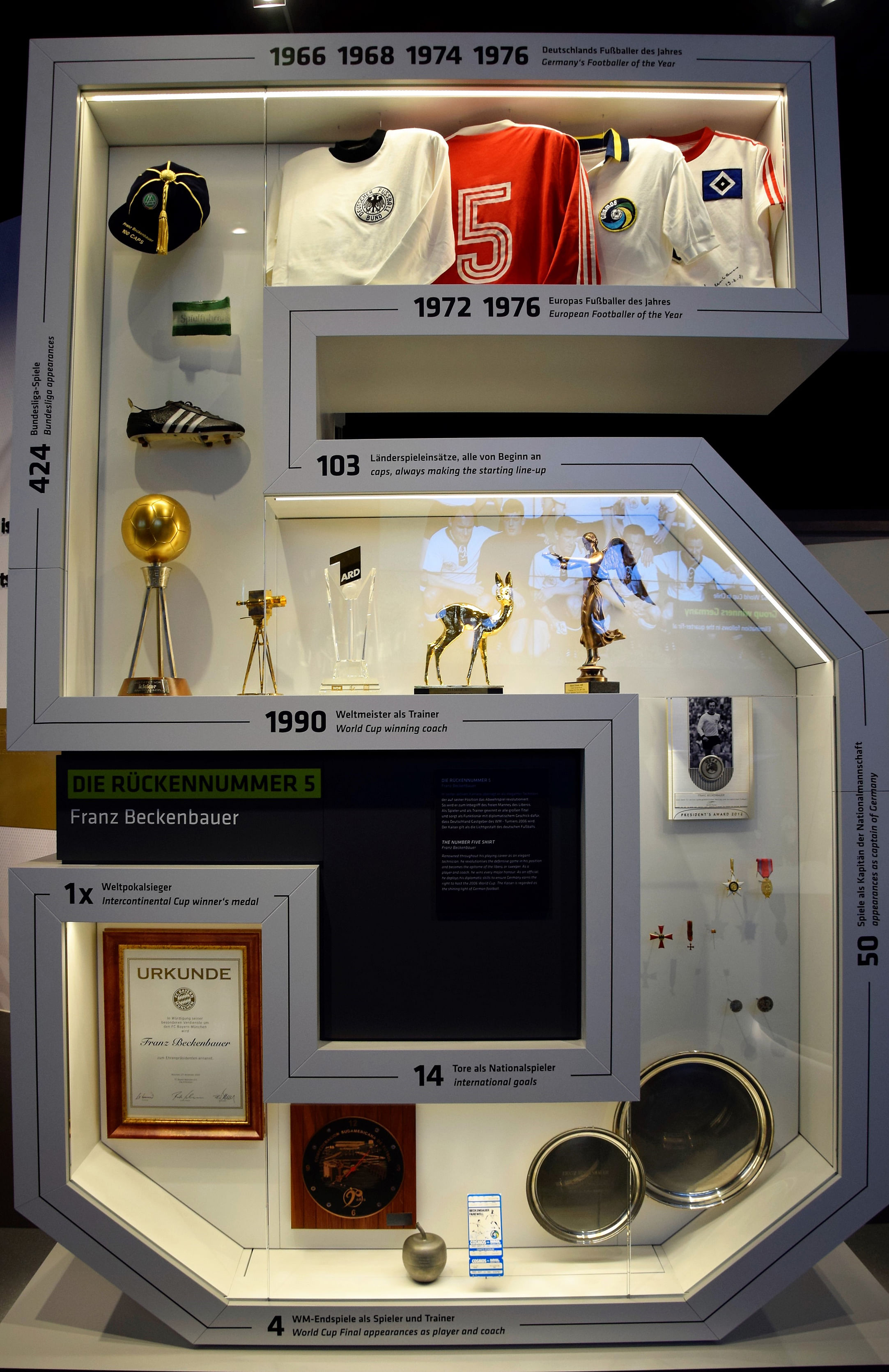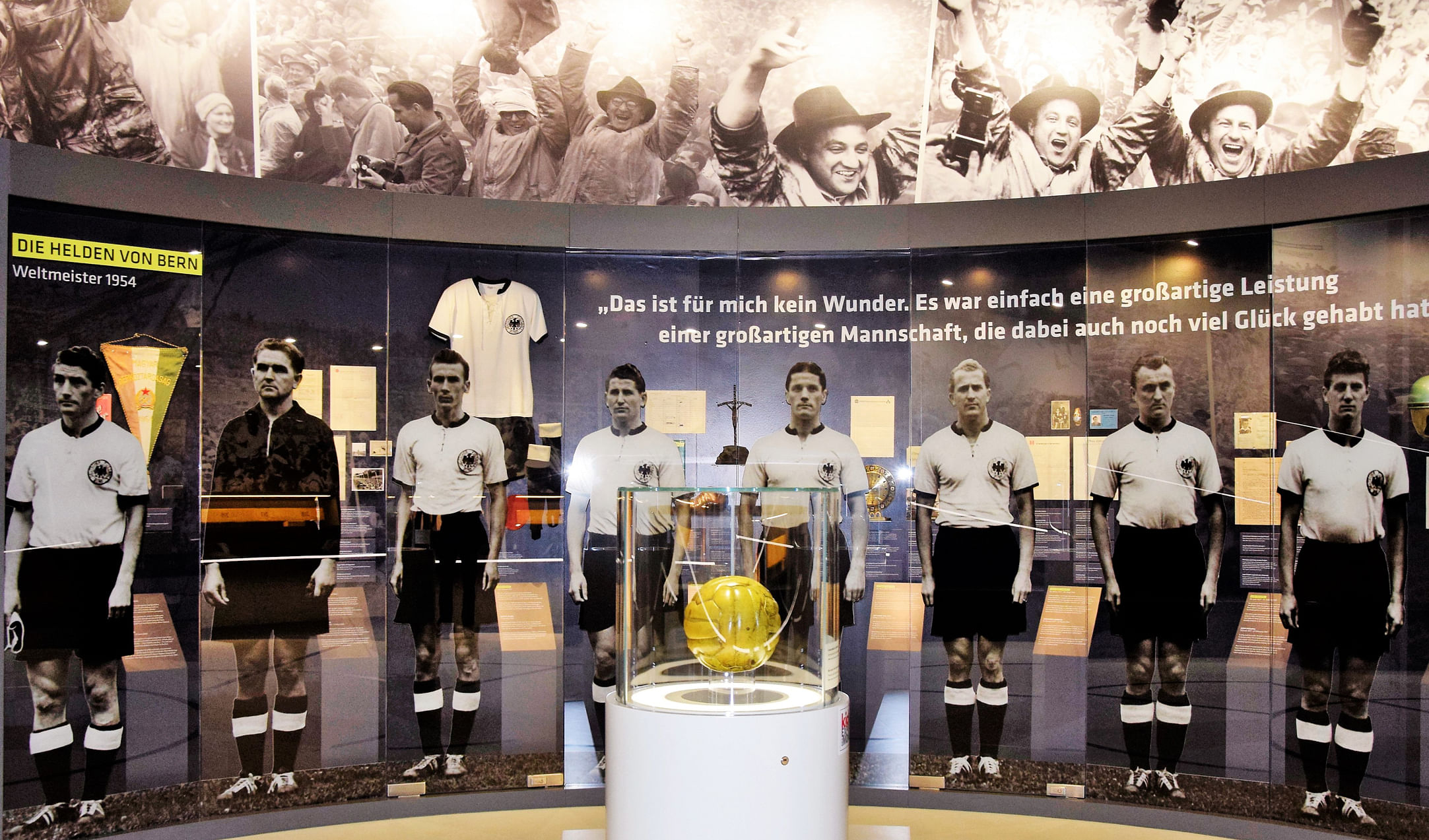-
BOOK IT / DEUTSCHES FUSSBALL MUSEUM
WHERE: Platz der Deutschen Einheit 1, 44137 Dortmund
WHEN: 9am to 6pm (Tuesday to Friday); 10am to 6pm (Saturday, Sunday and public holiday)
ADMISSION: €17 (S$26) at the door, €15 online; discounts available for groups, families, students, the disabled and happy hours (9 to 10am and 4 to 5pm, Tuesday to Friday)
INFO: www.fussballmuseum.de
Dortmund scores with museum
Germany's Football Museum is a must-visit for fans of the game


At first glance, Dortmund seems grey and grungy.
The centre of the Ruhr industrial valley, its steel factories and coal mines provided post-war Germany with the resources it needed to become an economic power. Unsurprisingly, like many working-class cities in Europe, football is a passion.
Its home team Borussia Dortmund often play the Champions League. They are one of the few teams which consistently challenge Bayern Munich, the glamorous leader of the Bundesliga (the German League).
Their stadium, the Signal Iduna Park, is the biggest in Germany. Apparently, when filled to its 80,000-strong capacity - which is always - and its yellow-shirted fans are stomping out their club songs in unison, it is a sight to behold.
I say apparently because I have yet to witness the spectacle. Tickets are notoriously hard to come by.

Borussia Dortmund have provided players for the German national team as well as premier clubs such as Real Madrid. Its former coach Jurgen Klopp is currently making waves with Liverpool in the English Premier League.
So it is small wonder that Dortmund has landed Germany's newest football attraction - the German Football Museum.
Plans for a centre for German football fans began in 2006, just after Germany hosted a successful World Cup. The museum officially opened in October last year, a year after Germany won the World Cup for the fourth time.
Dortmund had cleared a bus depot to build the €36-million (S$55.1-million) project. It is the first thing you see when you exit the main railway station.
If you are carrying a heavy bag, check it in at what resembles a real locker room in a stadium.
Here, two short films show pre- and post-game locker-room activities. The latter shows Germany's Chancellor Angela Merkel hugging a lot of half-naked footballers. It is well known that her enthusiastic, girlish fandom has enhanced her popularity with the Germans.
The entry point is on the second floor dedicated to the four World Cup wins. You are greeted by pictures of the squeaky-clean, broad-shouldered 1954 team. A worn leather ball with all their signatures stands evocatively in a case.

It is pure nostalgia, harking to a truly Germanic era intensified by the German national hymn. An old suitcase with a hat and green jacket indicates that sartorial splendour defined the German team even then.
The 1974 victory is the beginning of the Technicolour era and includes a display paying homage to Franz Beckenbauer, captain, star player, future national coach and World Cup organiser.
It is, however, the 1990 team which stir my memories, enhanced by loudspeakers and giant screens reproducing voice-over television commentaries and stadium excitement. I had watched the team closely as I was going out then with a German who became my husband.
But the highlight was definitely the Golden Generation, the 2014 team. Who could forget their crushing 7-1 defeat of host Brazil?

At the end of the long display hall is a huge orb, the Brazuca ball made by adidas. It looms over a much smaller ball. A Cup match uses more than one ball - each time a ball comes off the field, it is replaced by a new one.
"I think no one can tell you, not even the footballers themselves or the German Football Association, if this was the ball that made the winning goal," says a staff on duty.
Two side subjects catch my attention: Women's football, which ought to have a more prominent display, considering the women's two World Cup and eight European Championship wins; and the Stasi's infiltration and spying of football in East Germany. Football then, as it is now, has always been the gateway to a bigger world.
Leaving the World Cup floor, I pass a Schatzkammer or treasure chamber dimly lit to highlight some very big and gold trophies. It would have been impressive if not for the fact that these are all replicas.
The first floor is dedicated to the Bundesliga, the backbone of German football. The details are plentiful: football tactics and training, common injuries, the food served at the stadiums and the types of whistles used and how they sound.
There is also a rather reverential Football Hall of Fame. But I notice there is little mention of Lothar Matthaus, the versatile captain of the 1990 team, and Uli Hoeness, legendary manager of Bayern Munich.
"Well, Matthaus is too silly, with his series of increasingly young wives," says a Dortmund friend. And, of course, Hoeness was imprisoned for tax fraud.
The message is clear: Football in Germany is something good and noble. And this social responsibility is all borne out on the ground floor, where there is an on-site course for indoor football, rooms for football education and space for parties and school and corporate events.
So far, the museum has drawn visitors from all over the world, including the Dutch just over the border, Chinese and Japanese.
"Maybe because we have Kagawa," says a staff, referring to Shinji Kagawa, the most famous of the dozen Japanese players in the Bundesliga.
After almost three hours in the museum, I emerge into darkened streets beckoning with the alluring smell of sausages and kebabs. Even though it is winter, Dortmunders are nursing beer outside pubs and restaurants. Billboards advertise rock concerts and cultural events.
The following morning, I walk around Phoenix See, an artificial lake created out of the grounds of former steelworks. Expensivelooking houses and apartments overlook green meadows edged by restaurants and cafes. Some footballers are said to live here.
Like the phoenix, Dortmund seems to have risen from its ashes, with football as its fuel.
•Ming E. Wong is a freelance writer.
Join ST's Telegram channel and get the latest breaking news delivered to you.
A version of this article appeared in the print edition of The Sunday Times on March 27, 2016, with the headline Dortmund scores with museum. Subscribe
